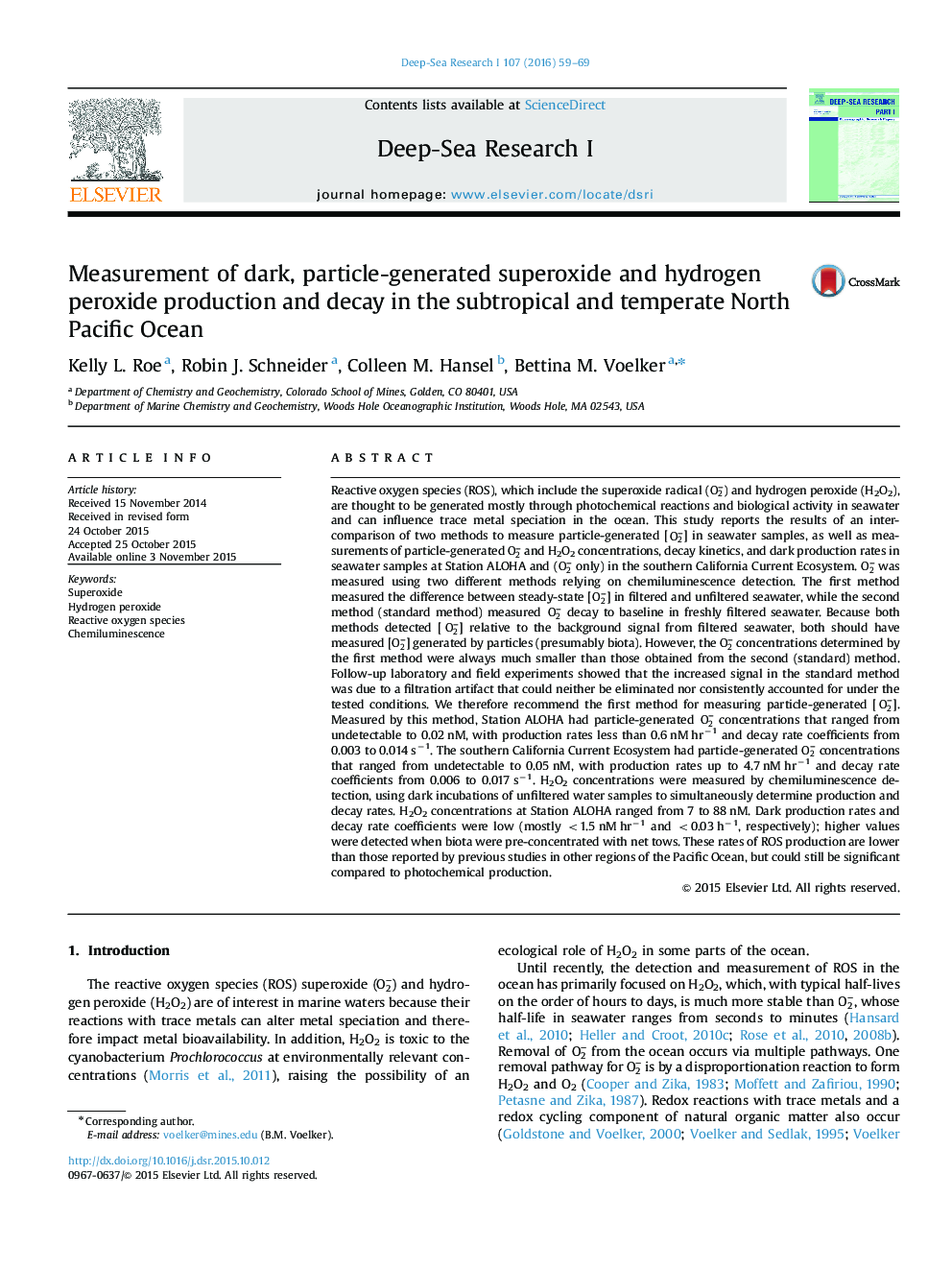| کد مقاله | کد نشریه | سال انتشار | مقاله انگلیسی | نسخه تمام متن |
|---|---|---|---|---|
| 6383472 | 1626323 | 2016 | 11 صفحه PDF | دانلود رایگان |
- Two methods to measure dark, particle-generated superoxide concentrations were compared.
- Significant generation of superoxide occurred during filtration of seawater samples.
- Dark, particle-generated production of superoxide at ALOHA station was less than 0.6Â nMÂ hrâ1.
- Faster dark production rates of hydrogen peroxide indicated a source other than superoxide.
Reactive oxygen species (ROS), which include the superoxide radical (O2-) and hydrogen peroxide (H2O2), are thought to be generated mostly through photochemical reactions and biological activity in seawater and can influence trace metal speciation in the ocean. This study reports the results of an intercomparison of two methods to measure particle-generated [O2-] in seawater samples, as well as measurements of particle-generated O2- and H2O2 concentrations, decay kinetics, and dark production rates in seawater samples at Station ALOHA and (O2- only) in the southern California Current Ecosystem. O2- was measured using two different methods relying on chemiluminescence detection. The first method measured the difference between steady-state [O2-] in filtered and unfiltered seawater, while the second method (standard method) measured O2- decay to baseline in freshly filtered seawater. Because both methods detected [O2-] relative to the background signal from filtered seawater, both should have measured [O2-] generated by particles (presumably biota). However, the O2- concentrations determined by the first method were always much smaller than those obtained from the second (standard) method. Follow-up laboratory and field experiments showed that the increased signal in the standard method was due to a filtration artifact that could neither be eliminated nor consistently accounted for under the tested conditions. We therefore recommend the first method for measuring particle-generated [O2-]. Measured by this method, Station ALOHA had particle-generated O2- concentrations that ranged from undetectable to 0.02Â nM, with production rates less than 0.6Â nMÂ hrâ1 and decay rate coefficients from 0.003 to 0.014Â sâ1. The southern California Current Ecosystem had particle-generated O2- concentrations that ranged from undetectable to 0.05Â nM, with production rates up to 4.7Â nMÂ hrâ1 and decay rate coefficients from 0.006 to 0.017Â sâ1. H2O2 concentrations were measured by chemiluminescence detection, using dark incubations of unfiltered water samples to simultaneously determine production and decay rates. H2O2 concentrations at Station ALOHA ranged from 7 to 88Â nM. Dark production rates and decay rate coefficients were low (mostly <1.5Â nMÂ hrâ1 and <0.03Â hâ1, respectively); higher values were detected when biota were pre-concentrated with net tows. These rates of ROS production are lower than those reported by previous studies in other regions of the Pacific Ocean, but could still be significant compared to photochemical production.
Journal: Deep Sea Research Part I: Oceanographic Research Papers - Volume 107, January 2016, Pages 59-69
